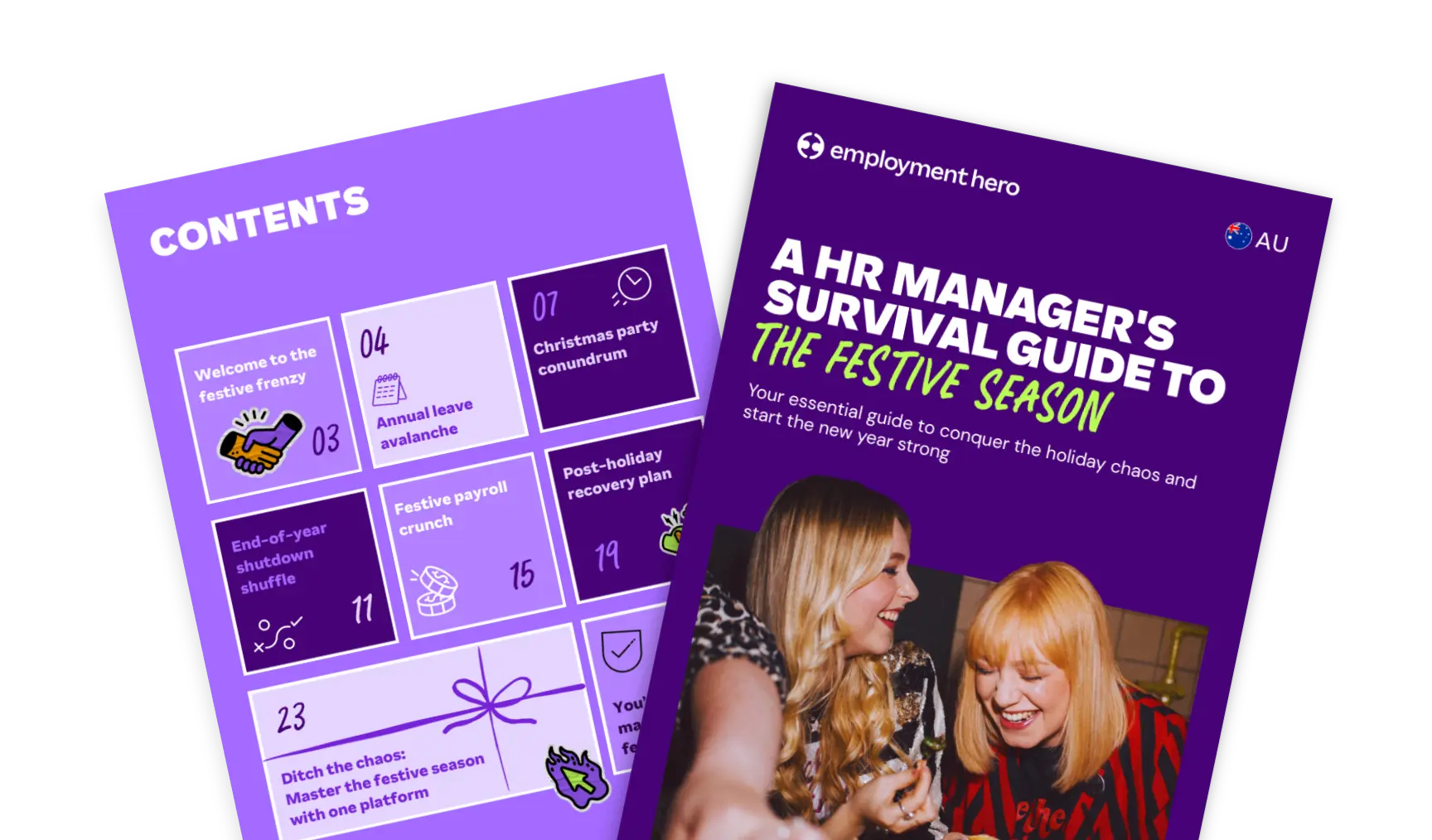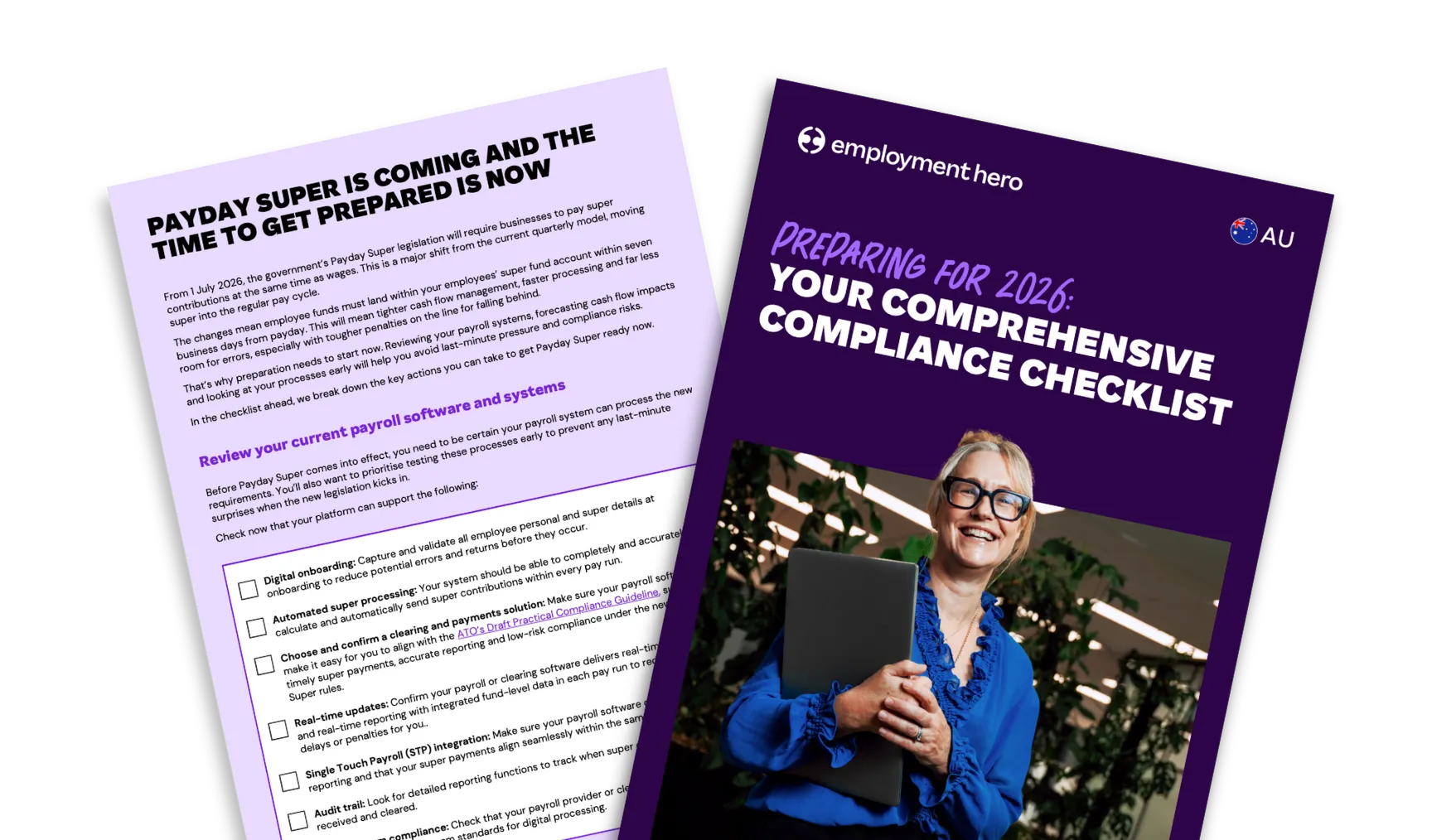Conflict of Interest Policy Template Australia
Published
Conflict of Interest Policy Template Australia
Your organisation’s integrity hinges on how effectively you handle conflicts of interest. This policy template offers guidance to identify and address conflicts before they affect trust or performance.
What is covered in this template?
This comprehensive resource equips your HR team with tools to address situations where personal circumstances may influence professional duties. The template includes
- A clear process for documenting and handling conflicts of interest within your organisation.
- A method for staff to recognise and declare when personal interests might affect their workplace obligations.
- Guidelines for addressing consensual relationships that exist within reporting lines.
- Declaration requirements for team members participating in higher-risk activities like procurement and tender evaluation.
- Guidelines for maintaining impartiality among those serving on recruitment panels
- A clear system for all workplace participants (from employees to consultants) to disclose any potential, perceived or actual conflicts that warrant attention.
What are the employers’ obligations when managing conflict?
Your organisation needs practical approaches that protect both your business and your people. A thoughtful framework helps everyone understand where personal and professional boundaries might overlap.
- Create a straightforward process for staff to identify and declare conflicts using clear forms that ask the right questions without overwhelming detail.
- Define what potential, perceived and actual conflicts look like in your context and share relevant examples that reflect your industry’s specific challenges.
- Maintain privacy when staff disclose personal information, storing declarations securely with appropriate access controls.
- Consider each situation on its specific circumstances, avoiding one-size-fits-all responses that might create unnecessary restrictions.
- Keep records of disclosures and your management approach; documenting your reasoning to demonstrate fair and consistent decision-making.
- Put sensible controls in place without creating unnecessary barriers, such as reassigning specific duties rather than entire roles when possible.
- Check that your conflict management system works as intended, reviewing your policy annually and after any significant organisational changes.
- Help managers respond effectively when team members share conflicts, whether through confidential conversations, standardised forms, or a designated contact point in your HR team.
Implementing a 1:1 coaching approach can help managers address sensitive conflict situations with the appropriate care.
What are the steps to successfully manage conflict?
When a potential situation surfaces, having a structured pathway helps everyone navigate the situation with confidence. This practical sequence guides you from initial identification through to ongoing monitoring.
- Begin with a disclosure conversation where the employee explains the potential conflict in their own words.
- Document the specific nature of the conflict using your standard declaration form
- Assess the risk level by considering factors like decision-making authority and financial implications.
- Consult relevant stakeholders while maintaining appropriate confidentiality
- Select the most appropriate management strategy—whether recusal, oversight, or reassignment.
- Communicate the decision clearly to the employee and the necessary team members
- Implement the agreed controls with clear timeframes and responsibilities.
- Consider incorporating a 360-degree review when evaluating how effectively conflicts have been managed, especially for senior positions where the impact of conflicts can be far-reaching.
How should an employer identify perceived versus genuine conflict?
Understanding the difference between perceived and actual conflicts helps you respond proportionately to each situation. A perceived conflict exists when circumstances suggest a potential for bias, even when no improper influence occurs; it’s about how the situation might reasonably appear to others.
An actual conflict arises when a genuine clash between personal interests and professional duties materially affects, or could affect, an employee’s judgment or actions. In severe cases where conflicts have repeatedly affected work quality, a performance improvement plan may be necessary to address the underlying issues.
Ready to strengthen your approach to conflicts of interest? Download our template to establish clear boundaries and protect your organisation. Need more support? Our 5-star rated performance improvement software helps manage complex cases with structure and accountability.
Access your free template below
Related Resources
-
 Read more: HR Managers: Don’t just survive the festive season, master it
Read more: HR Managers: Don’t just survive the festive season, master itHR Managers: Don’t just survive the festive season, master it
Make year-end easier: manage leave, payroll, parties and shutdowns with confidence. Get practical tips for Australian SMEs. Download the free…
-
 Read more: Preparing for 2026: Your Compliance Checklist
Read more: Preparing for 2026: Your Compliance ChecklistPreparing for 2026: Your Compliance Checklist
Get your business ready for the 1 July 2026 changes. See practical steps for Payday Super, cash flow planning and…
-
 Read more: Monthly business budget template for employers
Read more: Monthly business budget template for employersMonthly business budget template for employers
Plan your monthly income and expenses with our free monthly business budget template. Download today to track cash flow and…























